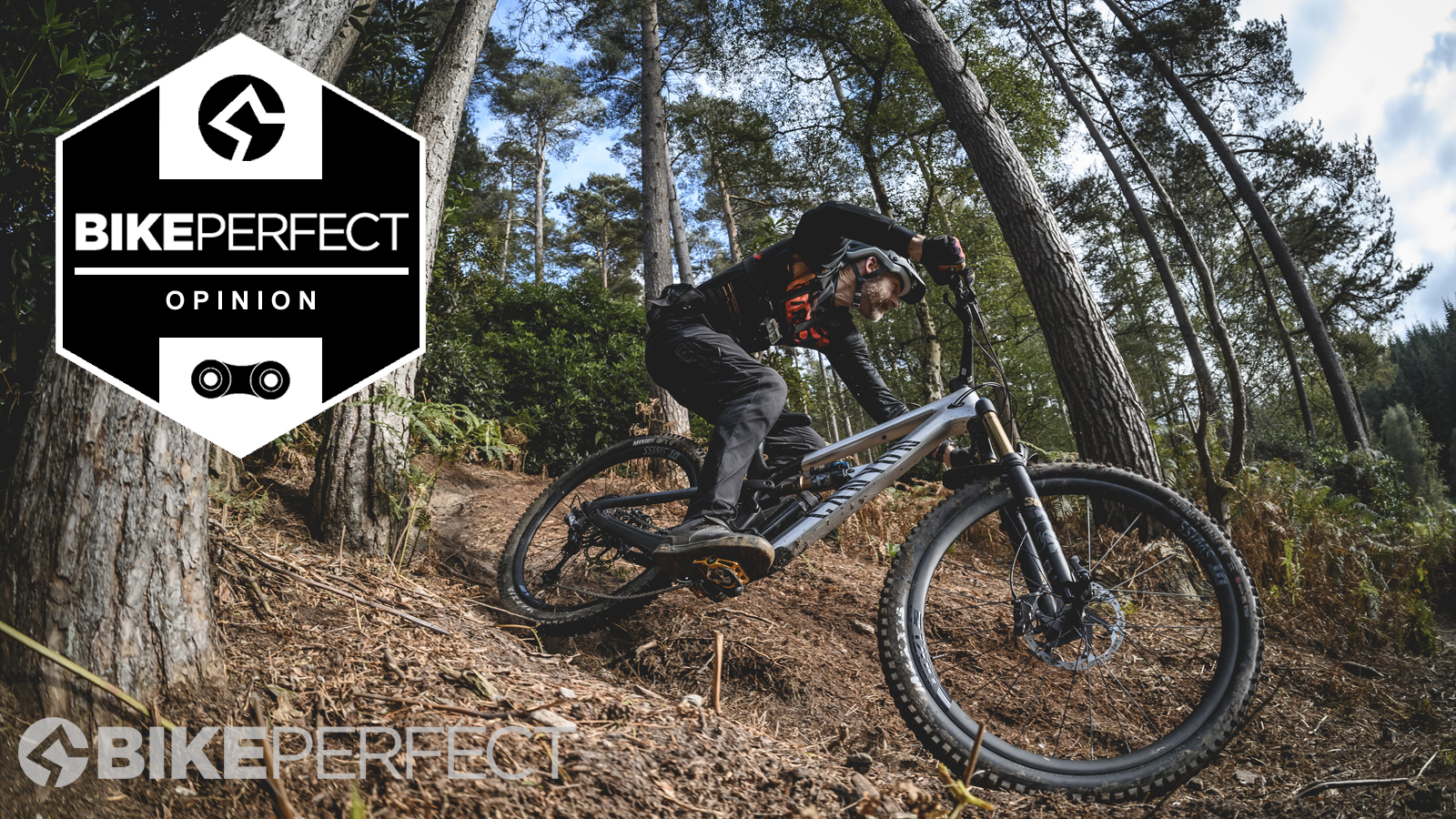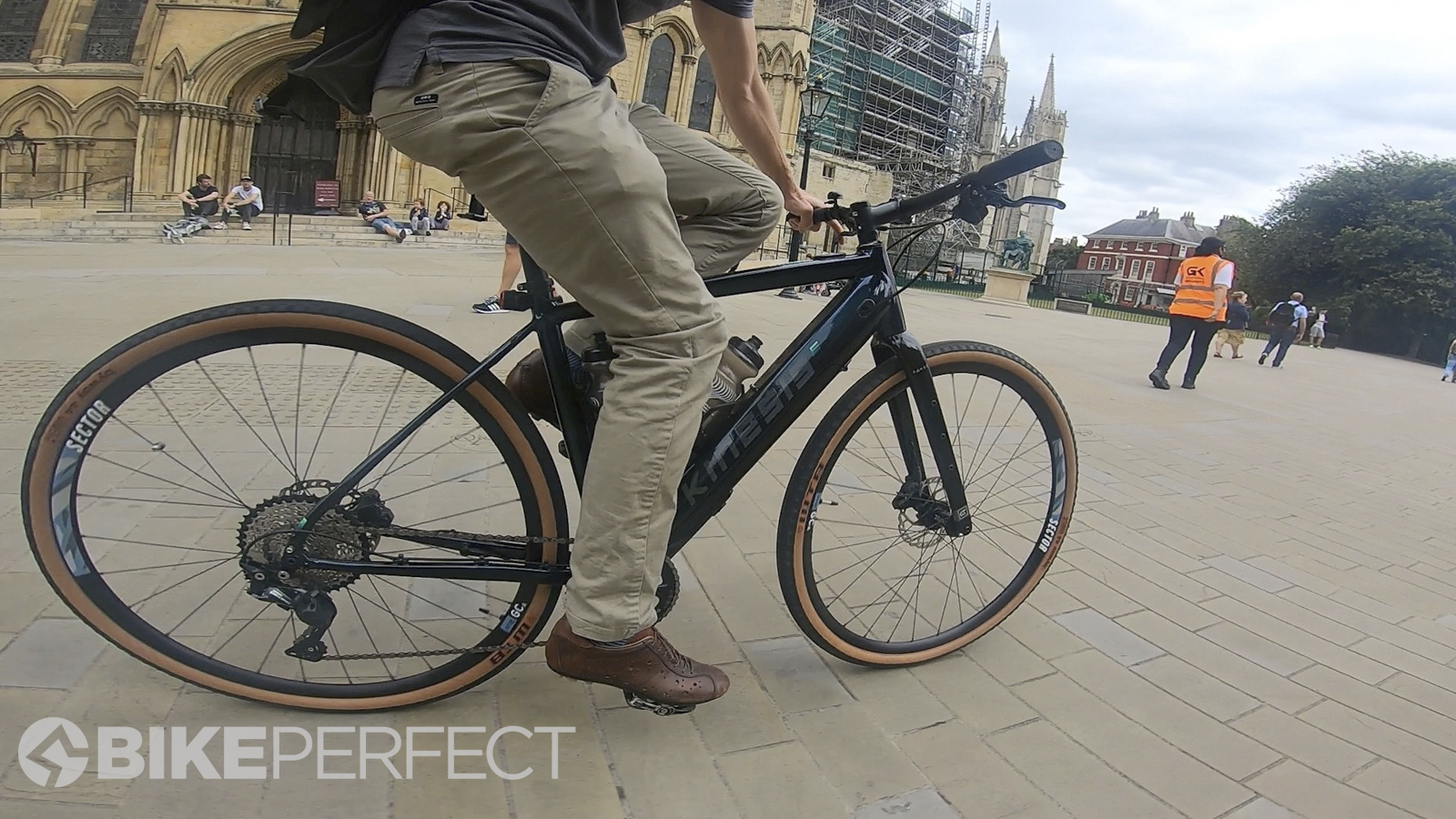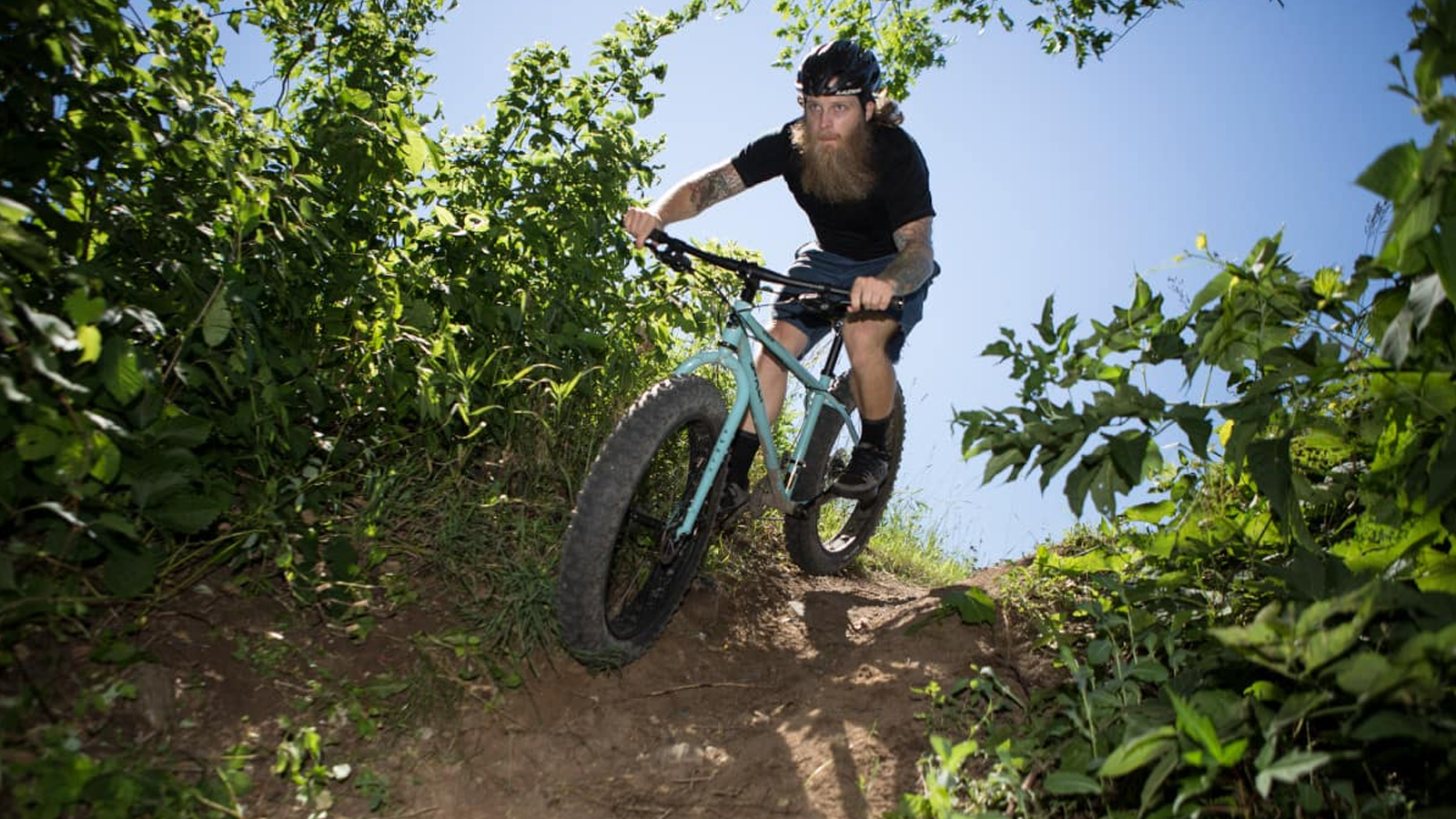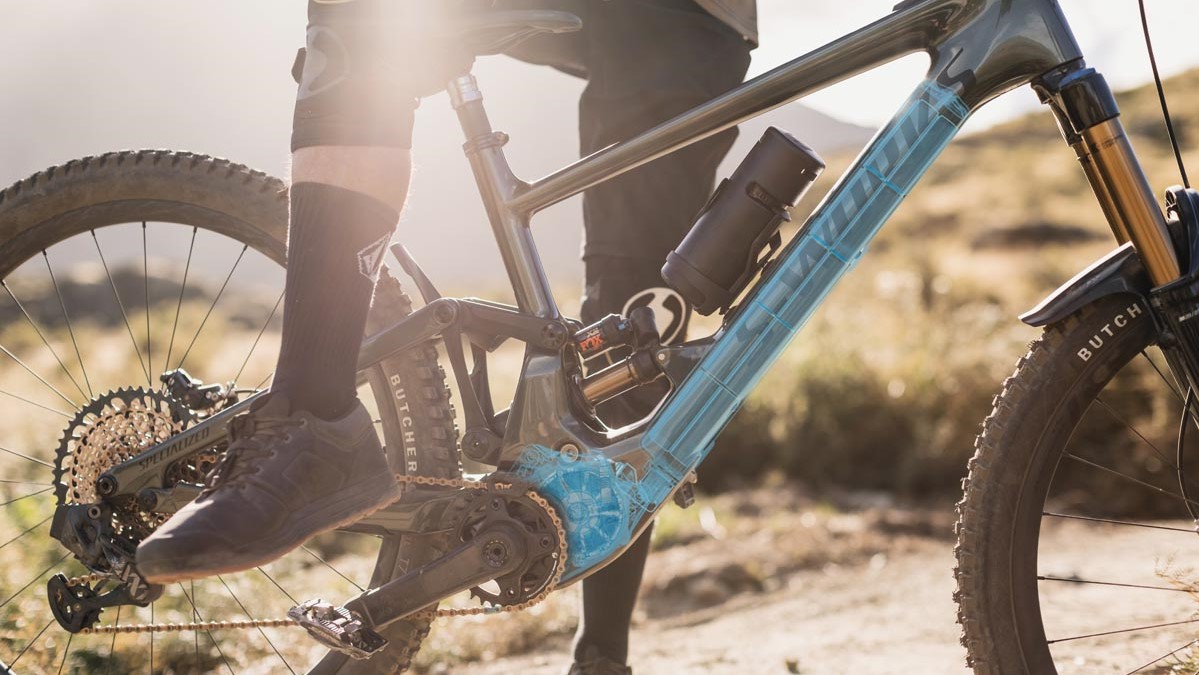Bespoken Word: What have we done to bikes?
Guy Kesteven reflects on the evolution of mountain bikes, and the role he’s played in it, for better or worse

A bloke rode past me when I was walking the dogs the other day and I had an awkward moment of clarity.
Normally I’m totally in the H. G. Wells camp of “Every time I see an adult on a bicycle, I no longer despair for the future of the human race,” but this time? This time? Damn, I felt guilty.
There he was, winding up a slight slope on the road next to the park, with a fat, chunky front tire choppering way out ahead of him and super wide bars splaying his arms out like some kind of crucifixion. It just looked like really painful, unnecessarily awkward progress, and I suddenly realized that the fact he was riding this ridiculously unsuitable bike to work was partially my fault.

For the past couple of decades I’ve been one of the voices bitching about test bikes with narrow bars, gradually pushing things out from 600mm when I started on the mags in the ‘90s out to 800mm. Every time I slid out a front tire during testing I ranted about why it should be a softer compound or a chunkier tread. Every time a front wheel tucked under and high-sided me, I’d let rip on why the head angle should be slacker and/or the stem should be shorter. And the more I and other testers moaned, the longer, lower and slacker bikes became. We weren’t put off by price either. In fact, arguably the cheapest bikes (as they’re likely being ridden by the least experienced and skilled riders) are the ones that need the safest, most enabling handling of all.
Our crusade for greater off-road capability was every bit as zealous when it came to componentry as well. I can remember dragging two of Trek’s top brass across the sodden moors of Yorkshire to make them realize that we measured rim brake pad life in hours and rim life in weeks. They came out with their first disc brake-equipped bike the very next year. We cheered when triple chainrings became double and then danced on their graves when our 1x hacks became a production reality. We ran tubeless when it meant cutting your own ‘tapes’ and valves out of old inner tubes and buying latex from craft shops that probably put us on some sort of sex offenders watch list.
And until a few days ago I was pretty self-righteous and happy with what ‘we’ have achieved because even the best mountain bikes under £500 now have disc brakes, sorted handling and decent-sized tires on wheels that can be set up tubeless.
But this guy didn’t look like some ragged edge addict getting some extra miles in as training for podiuming at his next enduro. He just looked like a regular bloke slogging to work on sticky tires, hands way out wide, making every wing mirror dodge or wiggle through bike path barriers more awkward. And no doubt he shares that ride with others creaking along on ‘full-suspension' bikes with frame designs that would have looked ugly in the ‘90s and an undamped spring that turns any pedal pressure into a pogo stick bounce. He almost certainly racks his bike up at work alongside several sets of ‘suspension’ forks, weeping with broken hearted rust in bitter memory of those first couple of weeks when there was grease, not grit, in their seals and they actually moved.
And maybe, just maybe they look across at a classic roadster with imperious upright geometry, sturdy full-metal mudguards, tires that don’t seem to care if they’ve not seen a pump in years and a chain case-covered, hub gear transmission that’s still as fresh as the day it left the shop decades ago.

But then those bikes only weighed slightly less than that mega-ship that got wedged sideways in the Suez Canal and handled about as responsively too. Their brakes are, well, they aren’t really brakes, are they? In fact, their complete lack of ability off-road is why people started hacking them into something more fun, whether that was for bombing round bomb holes in France or surfing sideways down Californian mountains.
And while things might have gotten a bit extreme now, the positives the mountain biking revolution has brought to riding are overwhelmingly positive. Disc brakes have been a game-changer whatever you’re trying not to crash into, and even 1x transmissions are a lot simpler for civilians to understand than multi-chainring, dangling chain, cross-referenced ratio complication. Tubeless tires will see your chances of getting to work on time revived with a quick milky squirt, and not explaining to your boss why you’re late AND covered in oil and filth before an important meeting.
And even the big bar, raked-out steering and fat footprint tires mean you stand a much better chance of surviving a slide on spilt diesel than if your inch-wide road race tires let go beneath bars narrower than your soon-to-be painfully bruised hips.
But you know what’s most important? Riding a bike with swagger makes you feel like a boss in a way that a road bike or city bike never can. Those big bars shout ‘come at me, I’m ready’. We can swoop around greasy town corners with slammed weight steeze, not teeter around like we’re really sorry we even thought about steering. Even if they don’t work, there’s a reason people buy bikes with springs and big tires on - because they just look a whole lot cooler and saying you have a mountain bike will always flex more than talking about your hybrid.
And that swagger makes a real difference to how you feel, even on the road where you can see what’s going on and hop off kerbs or smash through potholes without a problem, but also when you realize that a cobbled back street, park shortcut or towpath knocks minutes off your journey and takes you away from the traffic too. It gives you a buzz as you learn how to ride smoother, corner faster and maybe even do a little hop over that lump or that ramp off to the side. Plus when you get to work there’s a glint in your eye from having bossed your ride, not the thankful terror of a survivor. And maybe your heart is beating a little faster because you got that ramp really dialed today, or maybe it’s beating slower despite that meeting you’re dreading because you took a couple of seconds to watch a squirrel in the park or just suck in a big breath of the sun strobing through the trees.
So then you start adding in more off-piste bits and maybe, just maybe, you think about going for a ride on the weekend that isn’t to work. Using that ramp skill to try out the local pump track, or following that path in the park that goes out of town and up the hill. To that beautiful bit of countryside that’s too far to walk to, so you’ve only seen it from a car window. But now it’s your own special place of calm, or chaos, or both depending on your mood.
And while this wonderful, liberating release into the wild is exactly the same vibe as the ‘no cars, no cops, no concrete’ mantra that started mountain biking as we know it, the bikes we can buy now make accessing that hit a whole lot safer, easier and more fun. Plus all that tech that helps us push the limits has made other branches of biking better too, so roadies have disc brakes and tubeless tires. Gravel tourers can get super wide-range gears and handling that isn’t based on blueprints from between the World Wars. We’re even seeing commuter e-bikes being sold with dropper posts because they mean you can put both your feet flat on the ground when you stop like you were told to at school.

So next time I see Captain Crucifix splaying his way to work or pass a Girl Boss on her pogo stick supermarket suspension whip, I’m not going to feel guilty. Instead I’m going to feel a little bit proud of being part of the process that’s made bikes of every type a lot more capable, and biking a whole lot more fun.

Guy Kesteven has been working on Bike Perfect since its launch in 2019. He started writing and testing for bike mags in 1996. Since then he’s written several million words about several thousand test bikes and a ridiculous amount of riding gear. He’s also penned a handful of bike-related books and he reviews MTBs over on YouTube.
Current rides: Cervelo ZFS-5, Specialized Chisel, custom Nicolai enduro tandem, Landescape/Swallow custom gravel tandem
Height: 180cm
Weight: 69kg
